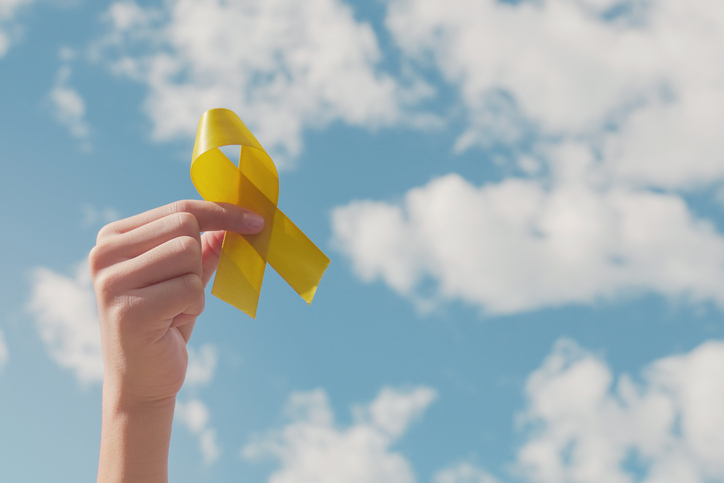
According to the Center for Disease Control and Prevention (CDC) in the U.S. in 2021, more than 47,000 people died as a result of suicide and there were an estimated 1.2 million suicide attempts. This equates to about one death by suicide every 11 minutes. To put this in relative terms, every 11 minutes, or half of an episode of the Office, someone dies via suicide.
Suicide is a major factor contributing to deaths in the United States, ranking as the second most common cause of death among individuals aged 10 to 34, and the highest in those aged 75 years and above. Remember to check in on your grandparents! Furthermore, men were more than three times more likely than women to take their own lives, firearms being the most frequent method of suicide used in about half of all suicides. The consequences of suicide on society and its people are significant, making it a crucial public health concern.

Urgent Care Los Angeles | Suicide prevention:
Risk Factors and Warning Signs to look out for
While many people think they may know the signs of suicidal ideation, it may not look like what we are used to seeing in the movies or on tv. Suicide is often associated with mental disorders and abusers of alcohol and drugs are often common victims of self-harming.
In some cases, there is a specific situation that is launched into the “tipping point” towards suicide. The CDC reports that 54% of those who lost their life from suicide did not have a known mental health condition, but dealt with mental health challenges. Substance abuse was reported as the second top reason for suicide, the top reason being relationship problems.
Characteristics that increase the likelihood of suicidal ideation, attempts, or death are known as risk factors. These can include:
- Previous suicide attempt(s).
- Family history of suicide
- Alcohol and/or other drug use
- Mood disorders such as depression or bipolar disorder.
- Access to lethal means such as having a firearm in the home or access to large doses of unsecured prescription medications
- Big losses or other traumatic events such as a breakup or a death. This can also include academic failures, legal difficulties, and financial difficulties.
- A history of trauma and/or abuse
- Chronic physical illness or chronic pain.
- Exposure to the suicidal behavior of others.
- Social isolation.
- Historical trauma.
- Stigma associated with seeking help.
On the other hand, warning signs indicate an iminent risk of suicide. Signs to look out for include:
- Talking or writing about death, dying or suicide
- Feelings of powerlessness or having no reason to live, no sense of purpose in life
- verbalizing phrases such as “It would be better if I wasn’t here” or “I want out”
- Increased alcohol and/or drug use
- Isolation from friends, family and community
- Partaking in reckless behavior or out of the ordinary risky activities
- Significant mood changes/swings
- Sharings feelings of being trapped or a burden to others
If you notice any of the above in someone you know, or yourself, there are things you can do to help. If this is an urgent matter, do not hesitate to contact a suicide prevention line such as the 988 Suicide and Crisis Lifeline or locate your nearest urgent care center. If you are local to the Los Angeles area, the Vermont Urgent Care Los Angeles may be a good resource for you.
There are preventative measures you and your loved ones can take if dealing with suicidal ideation.
Strategies for Suicide Prevention
- Help to strengthen economic supports by strengthening household financial security and stabilizing housing
- Create a protective environment by reducing access to lethal means from person at risk of suicide. Help to create healthy culture and reduce substance use through community-based policies and practices
- Suggest healthy connections and peer norms via community members and group activities
- Promote coping and problem-solving skills through social-emotional learning programs and helping families to improve their familial relationships
- Be able to identity and support those who are at-risk. Train gatekeeps, be able to respond to crisis, and plan for safety and follow-up after an attempt. Have therapeutic approaches on-hand.
- Intervene after an attempt and report and message about suicide safety
These protective factors are characteristics that decrease the likelihood of individuals considering, attempting, or dying by suicide.
What can you do to help?

If you believe someone you know is struggling with suicidal ideation, just ask. While many people are hesitant to ask out of fear of making the situation worse, studies show that asking someone if they are having thoughts of suicide does not increase the likelihood of a completed suicide nor does it increase suicidal thoughts. On the flip side, if you are struggling with suicidal ideation yourself, tell someone!
- Be there for them
This could be by the phone or in-person but I am sure they will appreciate having you either a foot or a phone call away. - Keep them safe
Not that you are solely responsible for the well-being of another person, but it certainly helps to reduce access to lethal means for those at-risk and to do your best to prevent them from hurting themselves.
Help them connect with ongoing support. If you know that you can not be there for that person 100% of the time, make sure they have access to resources or others who can supplement them during your absence. - Follow up
Make sure you are checking in occasionally, or more than that if need be. Call them once a day, and stop by their house. In the case of suicide, there is no such thing as being too annoying.
If you or anyone you know is struggling with suicidal ideation, here are a few resources you can access:
Contact the Suicide and Crisis Lifeline by calling or texting 988. You can also chat online at 988lifeline.org
The Trevor Project for those impacted in the LGBTQ+ community
AAKOMa for those impacted in the African American Community
Stopbulling.gov for young people who are being bullied
Urgent Care Los Angeles | Vermont Urgent Care
If you are seeking urgent care Los Angeles, Vermont Urgent Care is here to help. Do not hesitate to come in and seek support, especially if you or a loved one is dealing with suicidal ideation.